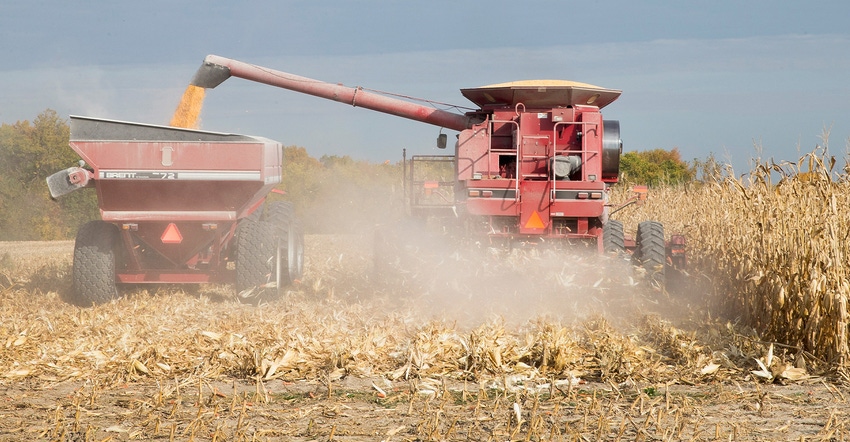October 4, 2019

By Richard Halopka
How can you manage the trash in your cornfield? Many farmers claim that GMO corn trash does not recycle like non-GMO corn trash; that the best trash management is to bury trash; and that farmers must add nitrogen or apply biological activators to promote residue breakdown. Let’s review each of these issues with some research observations.
Trash. Crop residue is not trash, because trash literally has no value. Crop residue is very valuable. Residue will naturally decompose and feed your soil critters, which then mineralize the nutrients in residue to be used in next year’s crop. Residue also protects the soil surface from natural elements, such as rainfall and temperature fluctuations, and decreases potential rainfall runoff by increasing water infiltration. The bonus is residue will aid in storing carbon in soil organic matter.
Residue volume. Corn yields in 2019 are greater than 20 or 30 years ago. Increased yields will generate greater plant surface area, thus producing a greater volume of plant material (residue). GMOs may contribute to better plant health and stay-green, but believe it or not, a GMO hybrid doesn’t automatically mean greater residue or increased time to recycle residue.
Burying residue. This is the worst choice of a management practice. A teaspoon of soil has 10 billion soil critters — live microbial animals, worms, insects, etc. Image how many critters are in an acre. To recycle crop residue, your critters will require oxygen, moisture and a stable temperature. Build a house and your soil life will flourish. When residue is buried, it is essentially out of sight, out of mind — until the following year when tillage delivers the residue to the surface again. Burying the residue limits oxygen and reduces soil critter activity on the residue.
A better management practice is to reduce the size of the residue during or after harvest to accelerate the decomposing process. Anchored roots with surface residue will keep your soil in place and provide a home for your soil critters.
Adding nitrogen or biologicals. Adding nitrogen or biological products to speed the decay process is a good theory. In theory, when composting a high-carbon material (corn stover), additional nitrogen may be required to provide a proper carbon-nitrogen ratio for composting organic material. If you are composting, this is a correct assumption — but a field setting is not a compost bin.
Research does not support a fall nitrogen application to improve the recycling of corn stover. While biological products, either bacteria or fungi, applied on stover is good in theory, neither N nor biologicals currently show an economical benefit in research. Remember, fall is a period of declining air and soil temperature, which contributes to reduced activity of your soil critters; this reduces decomposition of residue rather than lack of nitrogen or biological critters.
Here are a few residue management tips to consider:
1. Reduce residue size. If removing residue from the field, plant a cover crop.
2. Allow standing stalks with roots in the field. Roots with residue anchor the soil, reducing erosion. Planting a cover crop will add live roots, aid water infiltration and reduce soil erosion.
3. Limit fall tillage. This will improve soil structure and reduce erosion potential.
4. Plant a cover crop. Soil critters love live roots.
In summary, crop residue is not trash, but an important building block for your soil critters’ house. Residue on the soil surface and roots in the soil provide shelter and food for soil critters. Theories and observations are good for conversation, but unless research has proved an economical return, with our current tight farm margins, not purchasing nitrogen or a biological may be a best management practice. Soil provides the required nutrients and biological critters to reduce and recycle residues. This article focuses on corn residue, but the management practices can be adapted for all crop residues.
If you have questions related to crop residues, cover crops or crops in general, email [email protected] or call 715-743-5121.
Halopka is a certified crop adviser and the Extension agriculture agent in Clark County, Wis.
You May Also Like




